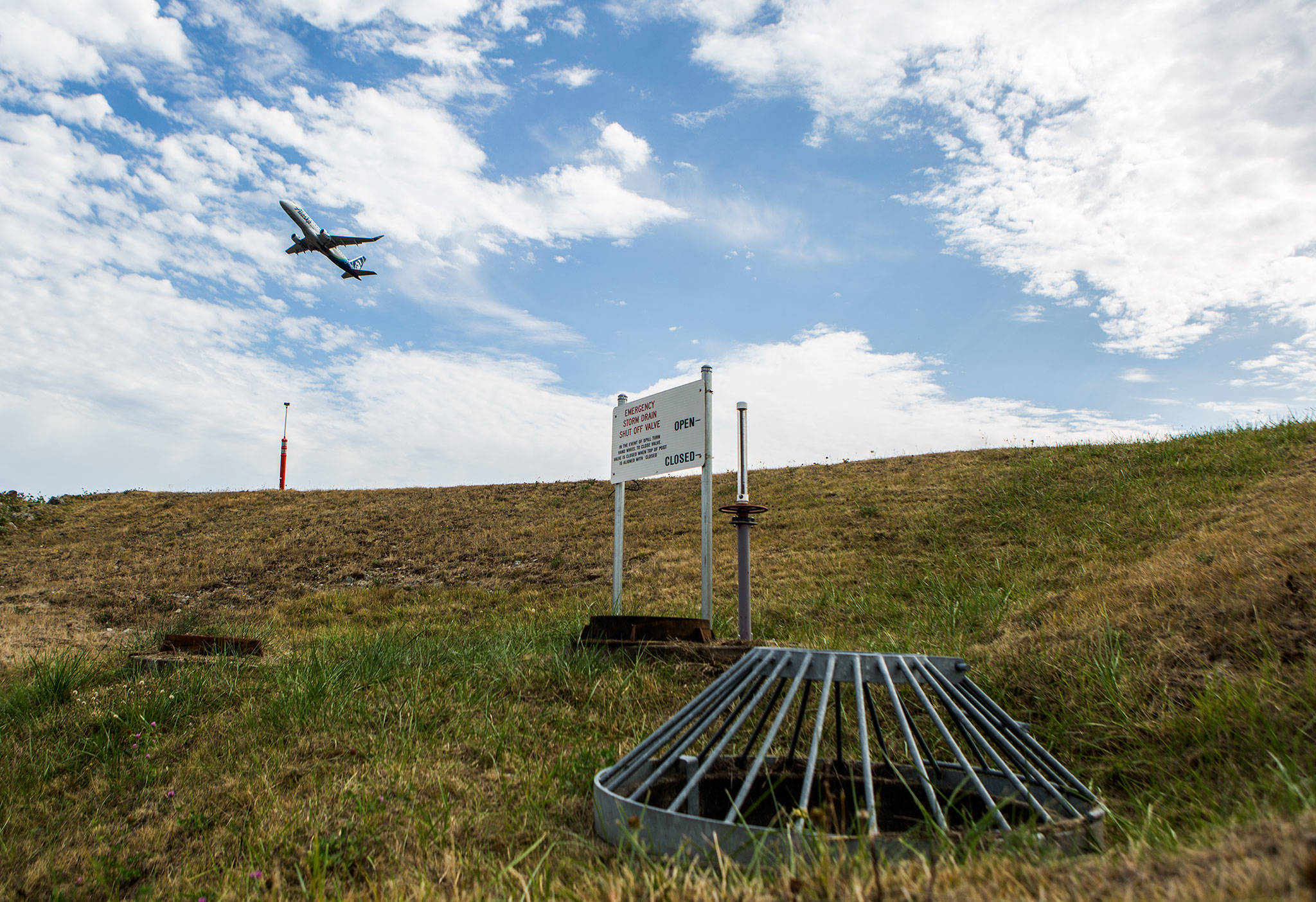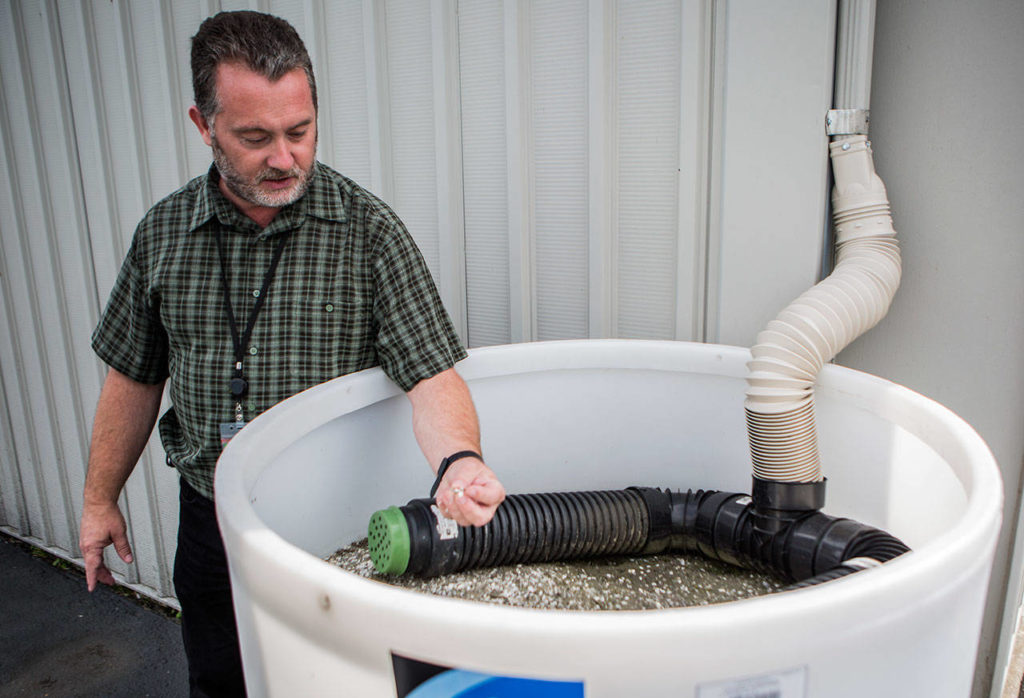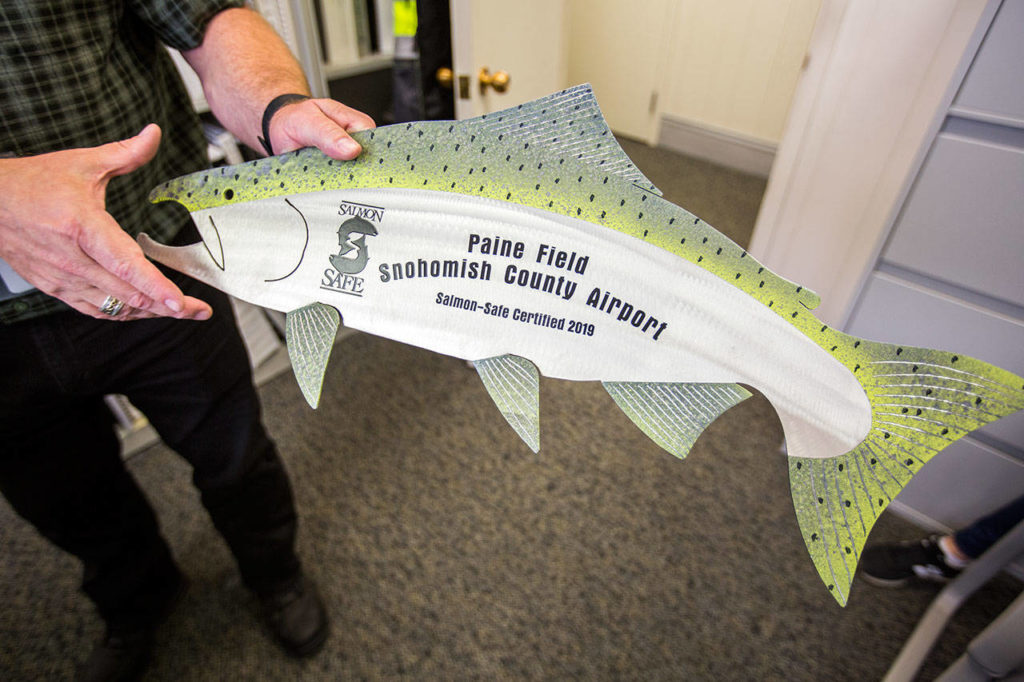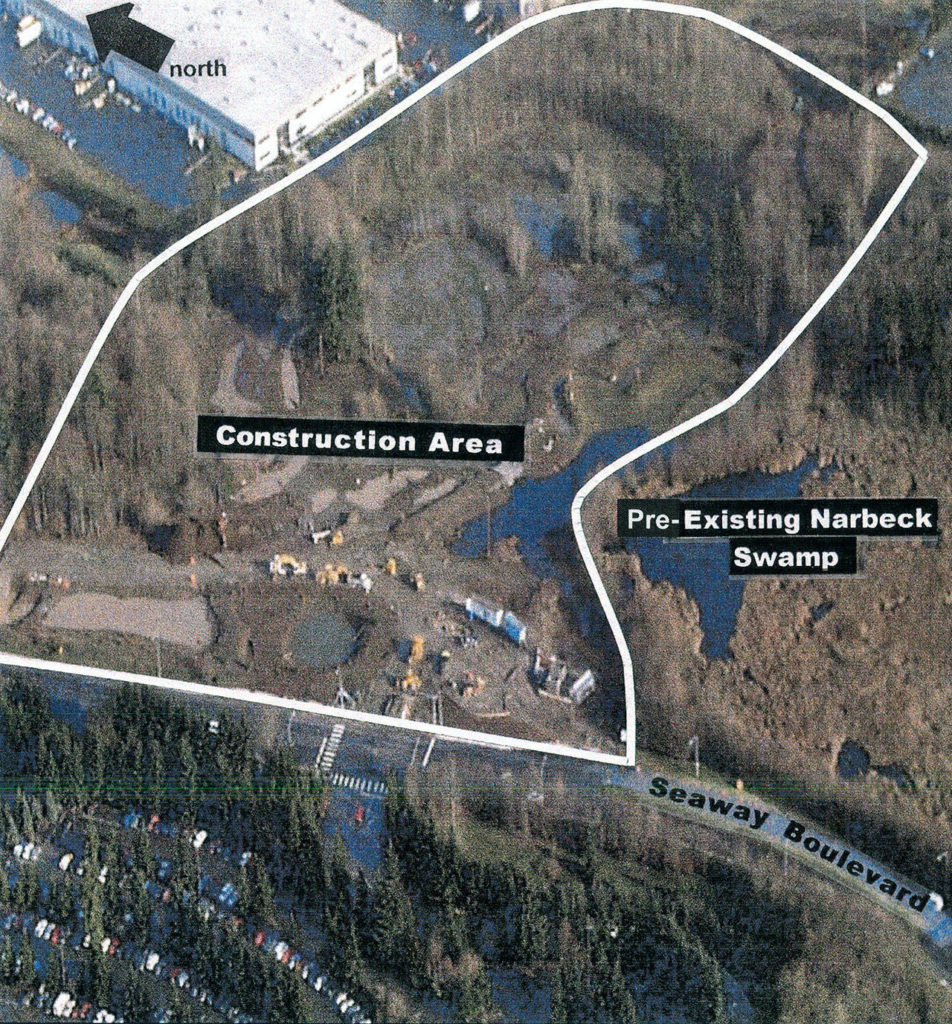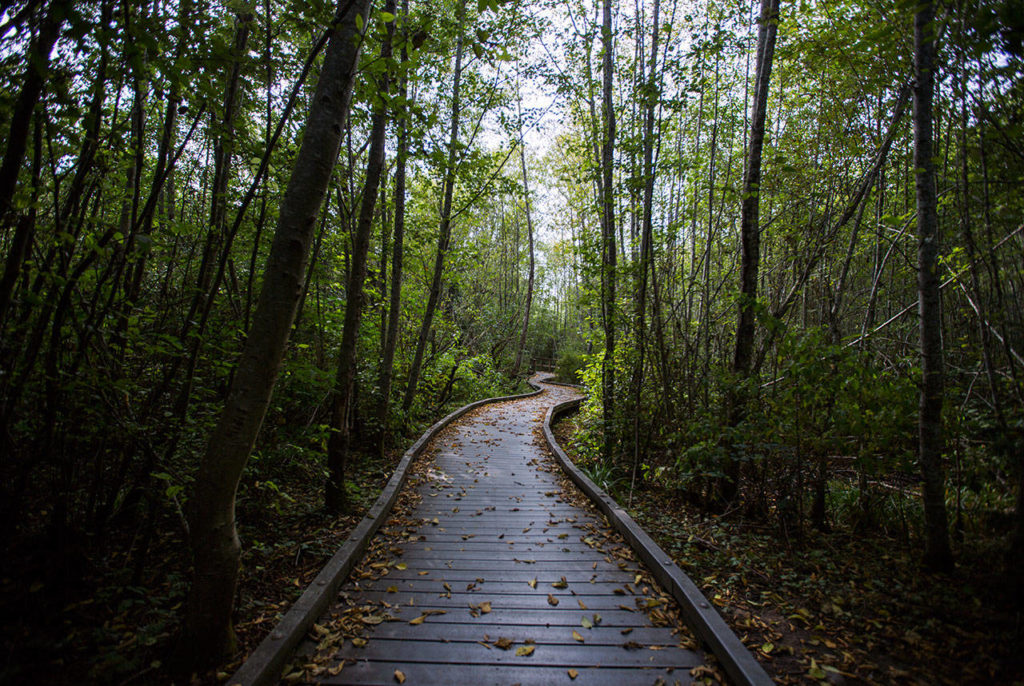EVERETT — The group of mallard ducks doesn’t mind when a passenger airplane zooms overhead.
As residents of the Narbeck Wetland Sanctuary, they’re used to it. The 50-acre swath of alder trees, native plants and small ponds lies just over 10,000 feet from Paine Field’s main runway.
When Andrew Rardin first started working at the airport in 1992, the Narbeck wetlands were just a dirt patch. Now, it holds two miles of trails winding through the alders and a mature cedar forest.
“This is the reward for decades of work,” said Rardin, the airport’s wildlife and environmental manager.
The airport created the sanctuary, along with the 13-acre Swanson Wetland on the opposite side of the airport, as environmental mitigation for runway safety projects in 2000.
It’s just one of the airport’s efforts that earned a Salmon-Safe Certification last week. The designation was given by the nonprofit organization Salmon-Safe. In a two-year process, a panel of independent scientists reviewed Paine Field’s stormwater management, pest control and landscaping.
Paine Field is the third airport to receive a Salmon-Safe designation, along with Seattle-Tacoma International and Vancouver International airports. Other entities to receive the designation include the city of Shoreline, Seattle Children’s Hospital and properties owned by Nike and REI Co-op.
A facility must have a neutral or positive impact on water quality in order to qualify for the designation.
Water draining off the airport’s roofs and concrete surfaces travels to any of four salmon-bearing water bodies downstream.
Big Gulch, Swamp Creek, Smugglers Gulch and Japanese Gulch are all direct recipients of Paine Field’s runoff. All the stormwater from the airport eventually reaches Puget Sound.
Of the facility’s 1,250 acres, 519 are covered by ramps, runways, roads and other hard surfaces. As rain washes over these areas, it picks up pollutants that could be washed downstream.
For the past 20 years, Rardin has worked to make sure that doesn’t happen.
At first, his job entailed making sure Paine Field was complying with environmental regulations. As time went on, he started pushing to go above and beyond what regulatory bodies required.
“It’s always been a personal thing to make sure we’re doing the right thing,” he said.
Making environmentally friendly choices isn’t always easy, or cheap.
Instead of using the de-icer typically used at airports that’s filled with harmful chemicals, he switched Paine to a more expensive but safer option.
Rardin said he’s always felt supported by airport administration to make environmentally conscious improvements, even if it means spending more money.
“For things that are important, I’ve never been turned down,” he said.
Getting the airport up to Salmon-Safe standards took years of making the right choices, Rardin said.
“You have to have a solid program and a history of doing the right thing,”
When Rardin first got to the airport in ’92, he had to tackle some harmful practices.
If there was an oil spill on airport property, it immediately washed down the drains and out into surrounding watersheds. Since then, he spearheaded constructing three levels of closure valves that can shut down drainage from sections of the airport.
Now, nearly all the water coming off the property can be shut down in case of a spill.
At the beginning of his tenure, Rardin said he spent most of his time tracking down airport tenants either disposing of oil incorrectly or washing contaminants down the drain.
But over time, Rardin said there’s been a cultural shift. Now, tenants help keep each other accountable with using environmentally friendly practices.
The airport routinely goes above and beyond the water quality compliance required by the Department of Ecology, said Dan Kent, executive director of Portland-based Salmon-Safe.
The facility is only required to test two of their four drainage basins, but they test all of them quarterly, regardless. They also have a third party do the testing, which the department doesn’t demand.
“It’s just another layer of being transparent,” Rardin said.
A few years ago, testing revealed that zinc was washing off airport property. Staff traced the source back to aging hangar roofing materials. In 2016, Rardin organized placing treatment bins to catch water coming off the roofs and filter out the zinc. The bins have layers of soils and sediments mixed with crushed oyster shells, which capture the zinc.
They have 10 barrels, each costing around $1,000. Testing has shown they filter out 99% of the zinc.
“It’s just so simple and it works,” Rardin said.
Many other small changes have added up over time. Chain-link fencing has been exchanged for coated materials to avoid mineral runoff. Plane wash racks have been diverted so they don’t drain into streams. A safer system for oil changes has been put in place.
For Rardin, making the airport sustainable is personal.
“I grew up at the airport,” he said. “I love it.”
His father was a commissioner at the airport. When he was young, Rardin often rode his bike from Mill Creek to watch planes take off. He interned at the airport in college before landing his current position after he graduated.
Rardin said the airport’s Salmon-Safe certification will allow him to move the airport’s environmental program up to the next level.
It’s a five-year certification, with a set of improvements that need to be met by the end. Those include a few policy refinements and phasing out certain pesticides, Kent said.
Bill Lider, a boardmember of the Sno-King Watershed Council, said Paine Field administration hasn’t always done everything it could for water quality. On several past construction projects, Lider said the airport has tried to avoid improving issues such as controlling runoff.
He also said airport tenants aren’t held accountable for runoff control, either.
But as part of the certification, Kent said tenants will be required to adopt some Salmon-Safe standards.
Overall, Kent said the airport already has a strong environmental management system in place.
“We were interested in working with Paine Field because of its reputation for environmental leadership,” he said. “In this process, we’ve really seen that to be true.”
With travelers passing through the airport every day, Paine Field could act as a platform for education on water pollution. It’s also a call to action for other companies around Puget Sound, Kent said.
“If an airport can be Salmon-Safe, perhaps other large scale infrastructure and businesses can also transition to a Salmon-Safe certification,” he said.
Julia-Grace Sanders: 425-339-3439; jgsanders@heraldnet.com.
Talk to us
> Give us your news tips.
> Send us a letter to the editor.
> More Herald contact information.
